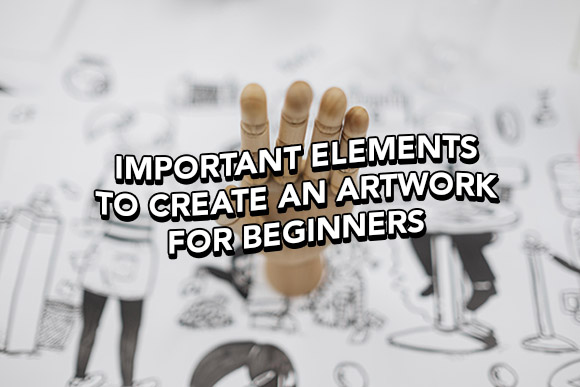Making artwork is an incredible hobby that you can keep and hang on the wall, or you might sell to generate income. Since this article is for the beginners out there, I’m making sure that every detail is easy and understandable. I am encouraging also that creating artworks are not just as exclusive for artists, everyone can make their own artwork because it is a product of creativity from ideas and imaginative stories.
Since I was a kid, I always make different drawings of the things that I imagine. I influenced by making storylines and skits that I heard from random stories like catastrophic events, world news, and superhero movies. It was my daily habit to draw different stuff in my notebook until I grew up and taking up a fine arts course.
It’s such an amazing feeling to accomplish things from my ideas and I want to make it as sustainable as I can earn money from it. That’s why I’m now into illustrations and I worked for different people and brands by making illustrations and simple graphic layouts. This time around, I want to list down some important elements to create artwork whether you are a newbie artist or a normal person who wants to make artwork as a hobby.
The Story
The message of the artwork really matters. We can tell an artwork by its subject and storyline, which can communicate by its composition or what the viewers feel about it. But there are few illustrations that don’t have direct subjects or stories to tell. There are times we need to understand deeply about the artist’s point of view on his masterpiece. For me, the story is really important to make an effective illustration.
The Fundamentals
The rule of the principles of design is a gateway method to construct artworks. Most of the fine art students have this topic in their fine arts class or in a graphic designing class as an introduction to various mixes of the elements of art or design in different mediums such as painting, illustration, photography, and more. So I listed some of the important elements or principles of design that can help you to make an effective illustration.
Start By Sketching
You probably use certain lines and curves when you sketch and try to construct your ideas in a paper as a draft drawing. That’s why the line is considered as the most fundamental elements of design. Every creation starts with fine line drawings as a starting place. In fact, I tried so many sketches before I produce an illustration artwork. Sketching can help you also figure out your ideas to avoid errors. Aside from line, Emphasis, Balance and Alignment, Contrast, Repetition, Proportion, Movement, and White Space are also important to make an effective art and design.
Choosing Right Colors
Have you heard about the color wheel? Or are you familiar with the colors of the rainbow? Talking about colors can be technical for others because this kind of topic is very long to discuss. If you want to know about this topic, you can check some of the reliable websites on Google when you search it. For me, choosing the right colors really depends on your context. The color wheel helps you to determine what kind of colors suit your masterpiece, but you have to identify which colors is contrasting and comfortable in your eyes. In my own process, I choose one main color for my artwork and I added monochromatic colors in the same hue. For example, I pick orange as my main color and I added yellow, yellow-orange, and red-orange as monochromatic colors in addition to my color choices. Then I pick contrasting colors to contrast my artwork or to create a split complementary scheme.
Tone
And lastly, the tone refers to the relative lightness or darkness of a color. The rule of tone in making artwork is to identify your light source and the shadow part of your subject. It is similar to photography that without light the image is not interesting.
The Medium
There are lots of mediums for your artwork. It really depends on your preferences or what kind of medium really gives you comfort to produce an artwork. As a digital creator, I prefer to use designing tools like Adobe Illustrator and Photoshop to produce digital illustrations for online platforms or for print. I also used the watercolor pad to paint a subject using a watercolor. At the end of the day, you have the decision to choose what kind of medium that suits your workflow and your artwork too.
The Final Output
Showcase your design by posting it online or in an exhibit house. Social media is a free and open space to introduce your masterpiece and it might be your place to get opportunities to grow and expand your creativity. Also, Behance is a great platform to showcase your sample works and there are a lot of designers, illustrators, traditional artists, and photographers there that you can stalk or view their sample works as an inspiration.
Start making now your illustration or artwork. You can see good progress when you fulfill to make artworks daily. Don’t pressure yourself to make a perfect artwork because everything starts at a bad phase where we can’t see perfection in our own artwork. Later on, you can see a lot of difference when you enjoy doing it and interpret your ideas on it. I hope you can learn something on my blog.








Leave a Reply